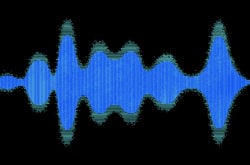Last week, we talked about delay and its practical uses in our productions. Today, we move on to talk about modulation effects such as phasers, chorus and flangers.
Not many people involved in music production know the differences between these three effects. If you do not, don’t fret as this blogpost will get you up to speed on the differences and applications of these effects.
What are the differences?
The concept between a flanger and a chorus are the same but differ with phasers. Both flangers and choruses are derived from having a modulated delayed signal mixed back into the original signal. But phasers, on the other hand, do not use delays at all.

Phasers
- Delay: None
- How it works: When a signal is run through a phaser, various frequencies in the original signal are delayed by different amounts, causing peaks and throughs in the signal thus canceling different frequencies and affecting the output you hear.

Flangers
- Delay: ~1ms to 5ms
- How it works: A flanger works by having a modulated delayed signal (an LFO for example), mixed into the original signal. This causes random “shifts” and “sweeps” in the frequency spectrum of your original signal thus causing the flanging effect.

Chorus
- Delay: ~5ms to 30ms
- How it works: Similar to a flanger, the only difference here is the delay time of the two effects and that the frequency notches are not random. The longer delay causes the original sound to sound like its doubled hence the term “chorus.”
Applications
Phasing
- In the 70’s when it was still expensive to have digital delay electronics, analog phasers were commonly used.
- However, as compared to flanging and chorus, phasing is often a “weak” effect due to the way it is designed and as a result are not often as used as flangers and choruses.
- A phaser would be used best on a guitar track, and in particular on funk/reggae genre songs, where you want to beef up the tone of the guitar and accent the grooves.
Flanging
- The name “flanging” came about in the 60s when the effect was derived by having a song recorded on two tape machines while slowing one of the machines down by placing your finger on the tape flange. The effect was used extensively by artist such as The Beatles and Jimi Hendrix.
- In practice, a flanger can be used to make a mono track, stereo. This is also known as the Haas effect where if you have a delay of less than 30ms, the listener would not be able to tell the two sources apart. This technique is useful for ‘faking’ mono instruments to sound stereo and is a widely used trick in the mixing stages.
- Subtle flanging can also give life to some instruments. Try flanging a bass and see how it adds weight and depth to it or try flanging strings to make it sound thicker without destroying the intonation and tuning of the string ensemble.
Chorus
- A common use for chorus effects is to double a mono vocal. Using a chorus to double a vocal part will thicken the vocal and make it sound bigger.
- Chorus effects can be applied to instruments where the signal is mono as well. A touch of chorus can often brighten a sound and make it come to life.
- Lastly, you can use chorus effects on almost any sound you can think of. Try using it on your synths, backing vocal track, guitar or even drums! A little bit of chorus can be the trick to help thicken and fatten your sounds.
Explore royalty-free one-shots, loops, FX, MIDI, and presets from leading artists, producers, and sound designers:
March 28, 2016



